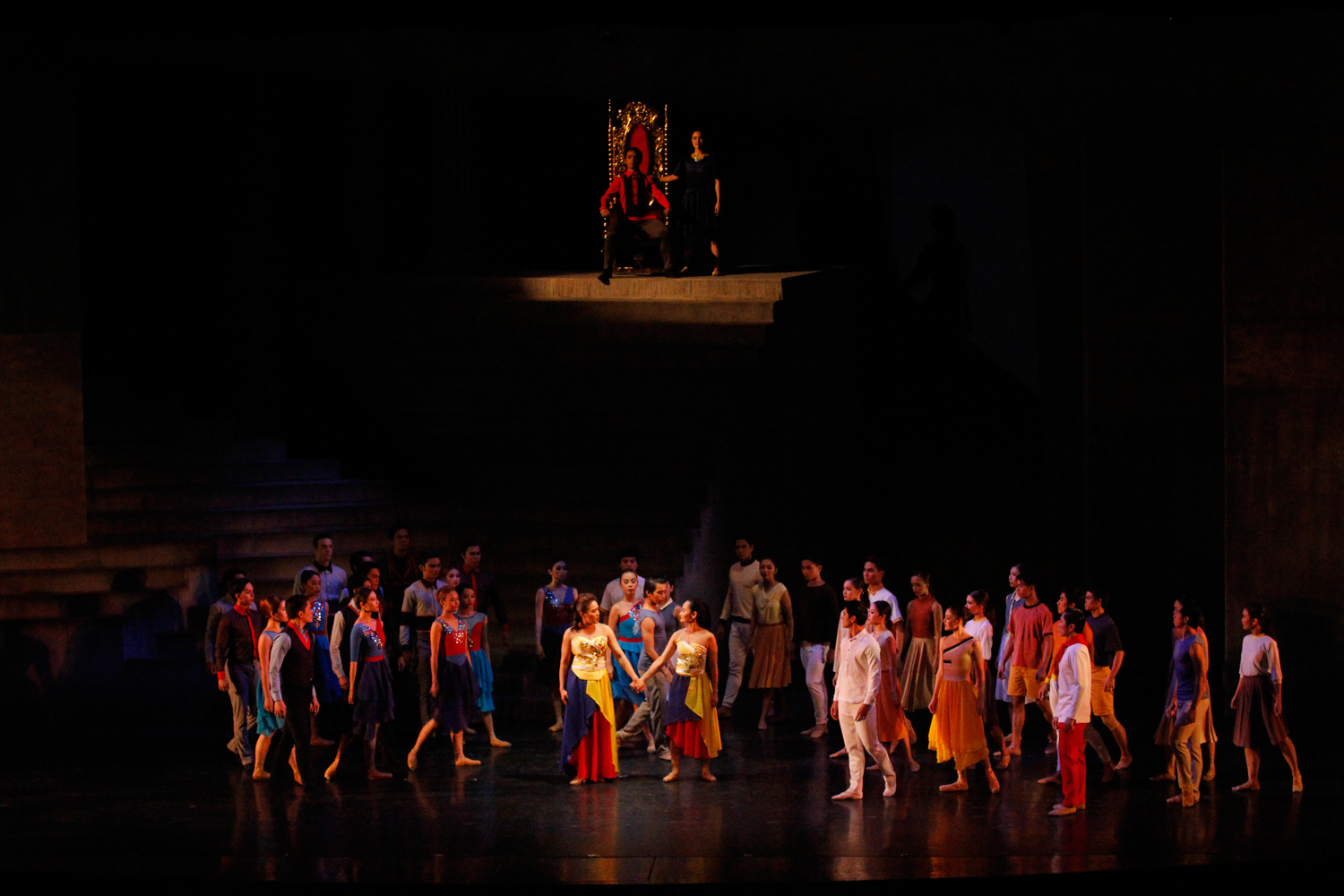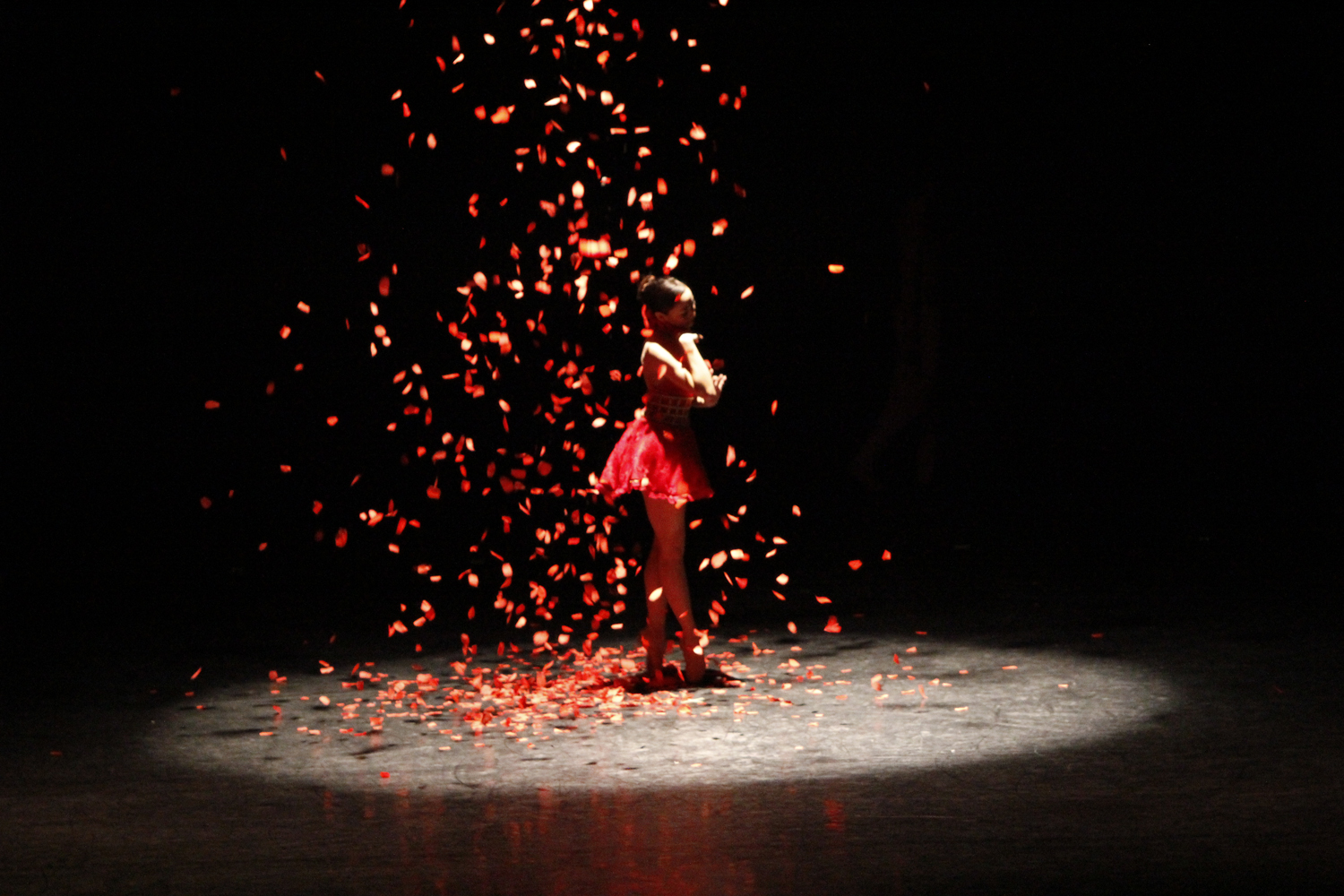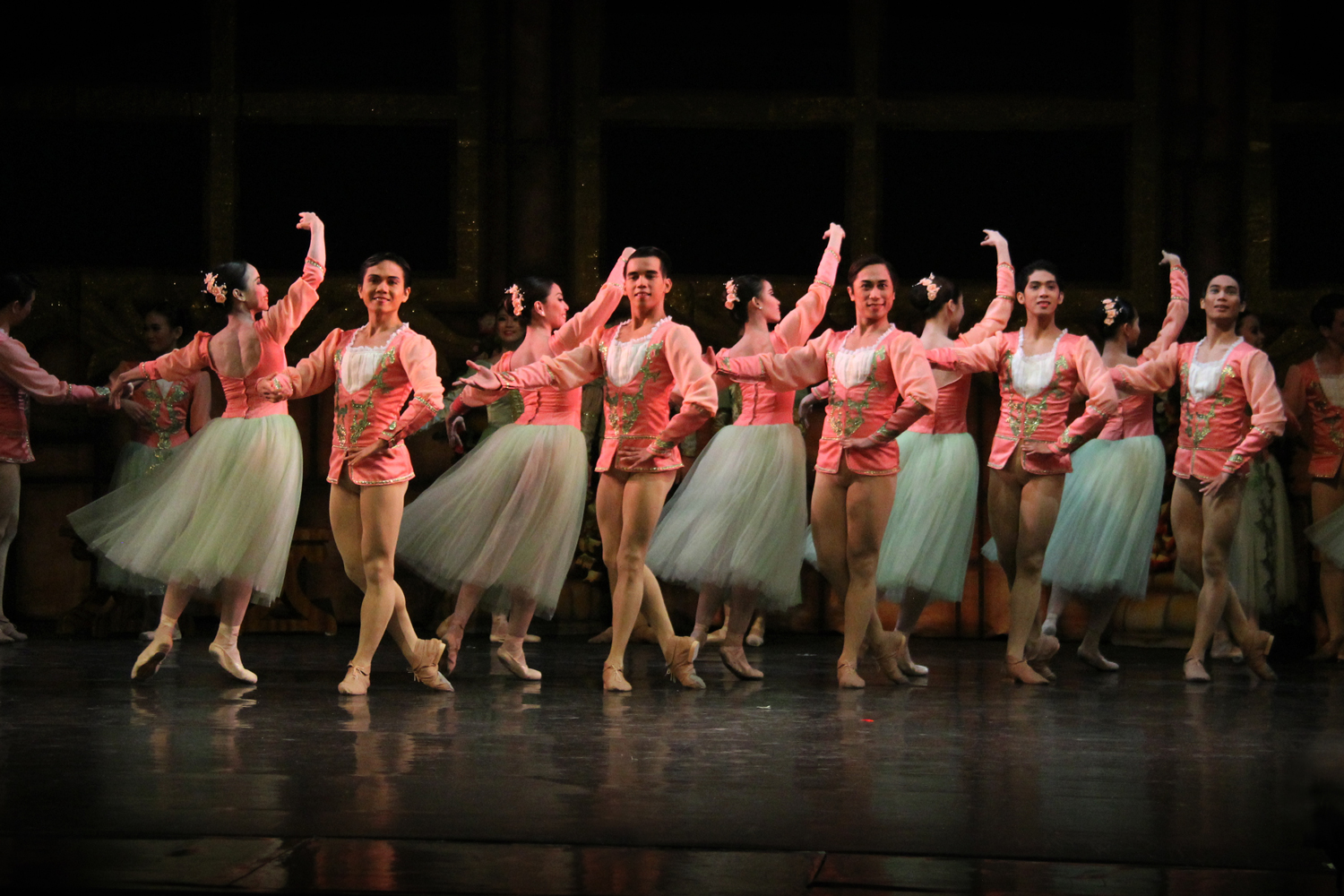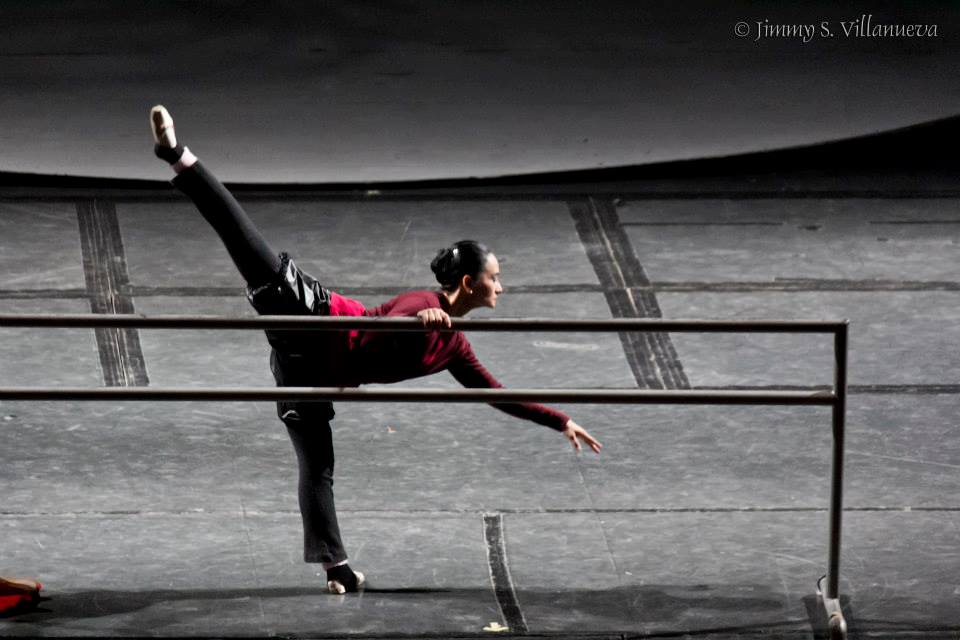(Third of a three-part series)
Interview by Susan A. De Guzman and Giselle P. Kasilag

In 1995, twelve dancers led by Lisa Macuja and Osias Barroso banded together to form Ballet Manila. Together with artistic director Eric V. Cruz, the fledgling group – brimming with talent, bolstered by youthful optimism and supported mainly by a familial network – dared to dream big.
As a touring ensemble anchored on the Russian Vaganova method, Ballet Manila dedicated itself to the twin mission of bringing ballet to the people and people to the ballet. No town was too remote, no stage too unconventional for this group to perform in.
The pioneer twelve assumed multiple roles both on stage and off. On provincial tours, they not only had to dance; they also had to take care of rolling the linoleum after each performance. Macuja was the marketing person on the constant lookout for sponsors, while she and Barroso also handled the training of the ten younger dancers.

From those humble beginnings, Ballet Manila has blossomed into the country’s leading – and certainly busiest – classical ballet company. It has an annual season that unfolds at its home theaters (the Aliw Theater and Star Theater built for Lisa by husband Fred J. Elizalde), presenting both the classics and new choreographies. It performs all over the country through its Ballet & Ballads series, trains ballet hopefuls year-round at its School of Ballet Manila and discovers and supports scholars through its Project Ballet Futures.
As Ballet Manila marks its 21st year – with the show Ballet Manila 21 on March 19 serving as a preview of its 21st season opening in August – we sat down with now co-artistic directors Lisa Macuja-Elizalde and Osias Barroso for a special interview of “21 Questions.”

In this three-part series, the long-time colleagues and former dance partners – but most importantly, best friends – recall memories of the group’s initial years, describe the challenges they face today and share their vision of a Ballet Manila twenty-one years on.
From a group of 12, you’ve grown into a company of over 60 dancers. Do you see the company growing more?
LME: Well, we already have BM 2. I think eventually, we will also have a BM 3.
OB: BM 2 is like the training to prepare them to become BM 1. But as BM 2 alone, their standard is really good; they can perform by themselves.
LME: There are cases when we’ve had to turn down projects because we just cannot be in five places at one time. But if it’s carefully planned, and you have the talent, you have the rehearsal time, the organization, it’s possible for Ballet Manila to perform in three or four places at one time. And I don’t think any other ballet company can do that. We are already doing it now. That’s one advantage – we can deploy artists simultaneously.
Is there still a goal for Ballet Manila as a company that you dream of achieving?
LME: I think a goal for Ballet Manila would be to feed the company with dancers who are only from the School of Ballet Manila. You know how the Mariinsky Theater is fueled by dancers only from the Russian Ballet Academy, something like that. Already we’re achieving it because we’ve adopted one style.
Other goals would be: to diversify the repertoire, to have more original works done on the dancers; and to have all the classics done performed with an orchestra because that’s the way it’s supposed to be performed, not using canned music.
Another goal is to have Ballet Manila go on an international tour of an original full-length ballet like Rebel. It’s a different kind of performance that you’re so proud of as Filipinos so you want more people to watch it, not just Filipinos.
OB: For me, that eventually, the school and company would become two separate entities. That it would really be like the Vaganova School (in Russia). Parang Philippine High School for the Arts – but just for dance. Dream lang. Because then, the Ballet Manila School can really become international and it would attract students from different countries and then maybe you could give degrees already.

After Rebel, is there another dream project in the pipeline?
OB: Lisa is already thinking of doing heroes’ ballets.
What will Ballet Manila look like in 2037, or 21 years from now?
LME: It would be nice if Ballet Manila could go into a building dedicated to just Ballet Manila. We have a unique studio now with three walls and a high ceiling, but we become worried about the weather because when it rains the studio is affected. Maybe we could be in a different kind of headquarters that would be more ideal.
I see Ballet Manila 21 years from now to be a company of 60 to 80, because with that, you can have actually completely separate groups of corps de ballet. Like now, we’re doing a triple bill – we’re doing La Bayadere, Bloom and Carmen. And there are some dancers who are in all three. Of course, you want to be able to have enough numbers of professional dancers in the company where one cast has covers so in case of injury, there’s someone who can easily take over. It would make our work more efficient.
I would love to be able to have full pension benefits for the dancers where for every year of service in the company you get this x amount of support to transition, so you have enough to start on a second profession.
I would love it if we could have the luxury of partnering with, say a college, where the dancers could go to school and get credits.
I still see us dancing and preserving the classics. Because as (my Russian teacher) Tatiana Alexandrovna puts it, it’s in the classics that you become stronger and develop your technique. Usually if you have too many contemporary ballets, the company loses its center and the dancers become weaker. So I think every year, every season, we would still have a solid number of classic ballets.
The atmosphere I grew up in in the two seasons that I had with the Kirov Ballet was that the corps de ballet will go from a rehearsal of Wilis to a rehearsal of Swans to a rehearsal of Seguidillas because this week, we’re performing Giselle, Swan Lake and Don Quixote. With that set-up, the dancers are really in top physical shape and the work is continuous and the muscles are trained in such a way that you can jump from one repertoire to another. Your artistry really develops.
OB: That’s the advantage Lisa and I had over our contemporaries – we had a chance to dance these three major classical full-length ballets almost every year, because we’d do it here and we were invited to guest abroad. We were performing these ballets constantly so we were growing with the role. We were also maturing in our art.
LME: And then hindi siya nakakahinayang (Your efforts get rewarded). Because sometimes, you put in all that work, you come to a certain standard of performance, you perform it five times consecutively, and then after that, you forget it for the meantime because you have to work on the next production. What happens is that your growth in that role will only happen in another two or three years when the company restages it. And that’s not the way also to educate your audience. The audience has to realize that the Giselle of (BM company artist) Dawna Mangahas at the age of 20 will be different from the Giselle of Dawna Mangahas at the age of 30. And they shouldn’t say, oh she’s dancing that role again, I’ve seen that.

What is it about Ballet Manila that you believe is important for every generation of BM dancers to know?
OB: I think it will always go back to the very beginning – how it all started. The dedication to building up this company that would cater more to developing the technique of the dancers.
LME: I would still keep the same values – the value of sweating it out in class, of completing the class from beginning to end. Because it is designed to prepare you for your rehearsals and to prepare you for the technique that you need for the performance.
I would stick to the basics, the standards, of the school. I don’t think it should relax once you’re a professional dancer already. You should still keep the same standards that you set for yourself as a student. The attitude of professional dancers is that you’re always a student. You will always be learning. You have to keep that kind of discipline because if you relax, that’s when it you’ll stop developing as a dancer. There are three key words – class, classics, commitment.
What is Ballet Manila offering in its 21st season?
LME: It’s called the Revenge of the Classics so it’s going to feature classical ballet. But because of the success of Rebel, and the fact that it’s Ninoy Aquino Day on August 21 and National Heroes’ Day on August 28, which are the two weekends of the beginning of our season, we’ve decided to do a repeat of Rebel to open our 21st season.
We’re continuing with the series that we started. For the Filipino Series, it’s Rebel. Then we go to the Classical Series, we have The Swan, The Fairy and the Princess – Act 2 of Swan Lake, Act 2 of Nutcracker and Act 3 of Sleeping Beauty. For the Holiday Series, we’re doing Cinderella which Shaz and I are choreographing. For Director’s Choice in February, we have Don Quixote which has always been my favorite ballet.

What is your commitment to the Filipino audience of the future?
LME: We go back to our mission and vision which is to entertain, educate and inspire. That is our commitment, really, to our audience. Because of course, you won’t buy a ticket and watch a Ballet Manila performance if you’re not entertained.
Then of course you want to educate them. As I said, you want them to develop with the company, be able to appreciate who is a turned out dancer, who has a nice line, who has nice form, who tells the story. You want them to be a discerning audience because that’s what challenges an artist also.
Of course, you want to inspire. You want to move people – that they have to come out of the performance and out of the theater in a way that will make them better persons, better audiences. That’s what an artist does, you move them with your work, your art, your creativity. Whether you move them to cry, or move them to action…
OB: Or to simply follow their dreams. Some people praise us about the good performance we gave and how inspired they were by it. So now, I will follow my dream. Now, I’m not afraid to pursue this. You move them to also realize some things in their lives.
LME: It’s been said that nothing can turn someone off the ballet than a bad ballet performance. And it goes with any performing art. That’s what our responsibility is and our commitment is to our audience – to never give them a bad performance that will turn them off from ballet.
OB: Sometimes, as an artist, you don’t realize how much an impact you have on the audience or the people who see you. That’s why you have to be responsible – the way you act on and off stage. One other commitment is the storytelling, that’s why we’re called storytellers on toes. We need to make sure that we are able to impart our message, and not leave leave the audience clueless as to what happened. For some people, their measure of art is something so deep that you cannot understand it if you’re not an artist. But that’s not true.
LME: We always tell the dancers in the green room – go out on stage now and give a hundred percent so that that audience will want to come back and watch.
OB: So that they’ll have good memories. As simple as that.